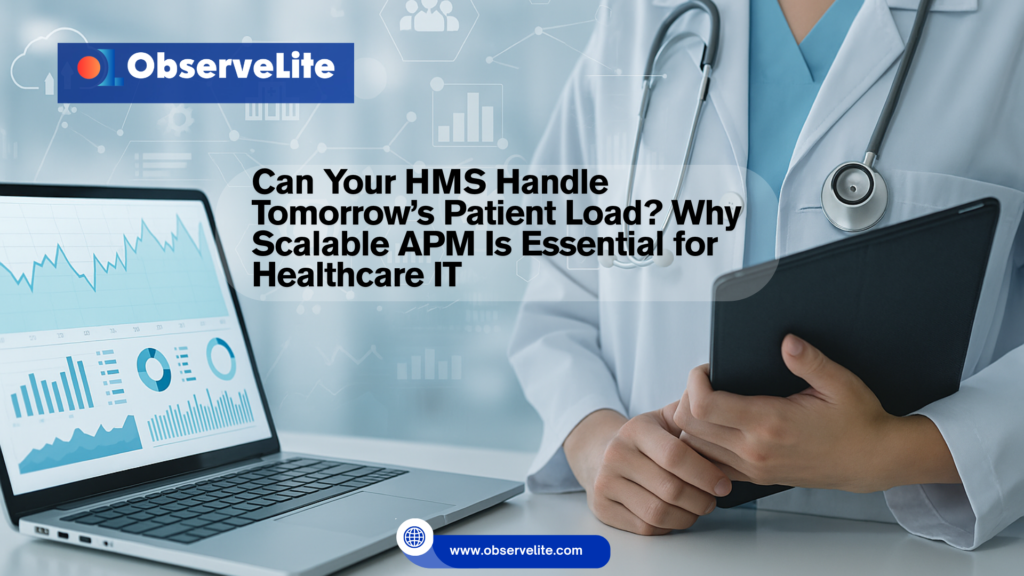Hospital Management Systems (HMS) are the digital backbone of modern healthcare. From managing patient records to scheduling appointments and supporting telemedicine, they handle enormous data flows every day. But as patient numbers rise and systems expand across departments, hospitals face a pressing question: can their HMS scale to meet tomorrow’s demand?
This is where scalable APM in healthcare becomes essential. Application Performance Monitoring (APM) ensures not just system uptime, but also patient safety, compliance, and smooth user experiences. Unlike traditional monitoring, scalable APM adapts to evolving workloads, predicts failures, and keeps pace with the demands of healthcare IT performance monitoring.
What Makes an APM Solution Scalable in Healthcare Environments?
Scalability in healthcare APM means the system can grow with patient loads, new applications, and regulatory requirements without breaking down. A scalable APM solution should:
- Handle fluctuating transaction volumes during peak hours.
- Support integrations with EHR, telemedicine, and imaging platforms.
- Maintain security and compliance standards like HIPAA while expanding.
This ensures hospitals don’t just survive today’s traffic but thrive under tomorrow’s increased demand.
How Can Hospitals Implement Application Performance Monitoring Across Distributed Clinical Systems?
Hospitals often operate across multiple sites, departments, and cloud platforms. Implementing APM for hospital management systems across distributed setups requires:
- Centralized dashboards to unify data from multiple facilities.
- Edge monitoring for telemedicine and local clinical apps.
- Cloud-native APM agents for hybrid infrastructures.
With these, hospitals gain a single view of system health, no matter where applications run.
What Are the Key Features Healthcare APM Tools Should Include?
To deliver reliable care, healthcare APM must go beyond basic uptime metrics. Critical features include:
- End-to-end transaction tracing across EHR, billing, and imaging.
- Real-time anomaly detection using AI models.
- Compliance monitoring for HIPAA and regional health standards.
- Patient-centric performance metrics, such as appointment scheduling speed and discharge times.
Together, these features allow healthcare IT performance monitoring to shift from reactive fixes to proactive improvements.
How Does APM Contribute to Patient Safety and System Uptime?
Every system delay in healthcare can have life-or-death consequences. Scalable APM contributes to patient safety by:
- Detecting slowdowns in EHR systems before doctors lose access.
- Monitoring uptime of telemedicine platforms during virtual consultations.
- Ensuring real-time data integrity in patient monitoring devices.
By protecting uptime and reliability, scalable APM in healthcare directly supports safer patient care.
Which Healthcare Workflows Benefit Most from Scalable APM?
Not every hospital workflow has the same sensitivity to downtime. The biggest beneficiaries are:
- Electronic Health Records (EHR): Delays impact diagnosis and treatment.
- Imaging Systems (MRI, CT scans): Large data transfers need high performance.
- Appointment scheduling: Downtime leads to patient frustration and missed visits.
- Billing and insurance claims: System lags can cause financial bottlenecks.
APM for hospital management systems ensures these workflows stay uninterrupted.
Can Synthetic Monitoring Help Prevent Downtime in Healthcare Applications?
Yes. Synthetic monitoring simulates real-world scenarios—like a patient booking an appointment or a doctor pulling a lab result—before actual users experience issues. This helps hospitals:
- Identify bottlenecks in advance.
- Test updates without risking real patient data.
- Maintain patient satisfaction during high-traffic periods.
What Are the Cost Implications of Deploying Scalable APM in Hospitals?
Cost concerns often hold hospitals back. But scalable APM reduces long-term expenses by:
- Preventing revenue loss from system downtime.
- Reducing IT firefighting costs with proactive monitoring.
- Ensuring compliance, thus avoiding costly fines.
In reality, scalable APM is less a cost center and more a revenue safeguard.
How Do APM Tools Fit Into Hybrid or Cloud-Based Healthcare IT Infrastructures?
Most hospitals today use a mix of on-premise and cloud applications. Scalable APM supports this by:
- Monitoring across public, private, and hybrid clouds.
- Offering container and microservice-level visibility for cloud-native HMS apps.
- Ensuring seamless scaling as hospitals adopt cloud-first models.
This adaptability makes scalable APM in healthcare future-proof.
What Role Does AI Play in Root-Cause Detection and Alerting?
AI enhances APM by:
- Correlating incidents across servers, apps, and networks.
- Predicting root causes instead of just flagging symptoms.
- Reducing alert fatigue by grouping related alerts into a single actionable notification.
This empowers IT teams to solve problems before clinicians or patients even notice them.
How Do Scalable APM Systems Support Compliance with Healthcare Regulations?
Compliance is non-negotiable in healthcare IT performance monitoring. Scalable APM helps by:
- Maintaining audit trails for every transaction.
- Monitoring data privacy standards under HIPAA, GDPR, etc.
- Offering real-time compliance dashboards for regulators.
This ensures technology upgrades don’t compromise legal obligations.
What Challenges Arise When Implementing APM in Multi-Site or Telemedicine Platforms?
Challenges often include:
- Integration complexity: Different systems using different standards.
- Latency issues: Telemedicine requiring high-speed performance.
- Change management: Training clinical and admin staff on new monitoring tools.
Overcoming these requires phased rollouts and vendor support, but the long-term payoff is resilience.
Frequently Asked Questions
Q1. What is a scalable APM in healthcare?
It’s a performance monitoring approach that adapts to growing patient loads, new technologies, and compliance requirements in healthcare IT.
Q2. How does APM improve patient safety?
By ensuring critical systems like EHR and imaging remain accessible in real time, avoiding care delays.
Q3. Can APM reduce hospital IT costs?
Yes. Proactive monitoring minimizes downtime and reduces the costs of emergency IT interventions.
Q4. Is APM essential for telemedicine platforms?
Absolutely. Telemedicine requires low-latency, high-uptime systems—something only scalable APM can guarantee.
Q5. How is APM for hospital management systems different from generic APM?
It includes healthcare-specific metrics like appointment scheduling, clinical workflow uptime, and compliance tracking.
Conclusion
Healthcare is entering an era where digital resilience is just as critical as medical expertise. Scalable APM in healthcare ensures that hospital management systems can grow without sacrificing patient safety, compliance, or experience.
By adopting APM for hospital management systems, hospitals can move from reactive IT troubleshooting to proactive performance assurance. For leaders in healthcare IT, this isn’t just an upgrade—it’s the foundation for delivering reliable, patient-centered care in the years ahead.


